HBO’s ‘The Princess’ Reveals the Strange Chemistry Behind Princess Diana’s Magic
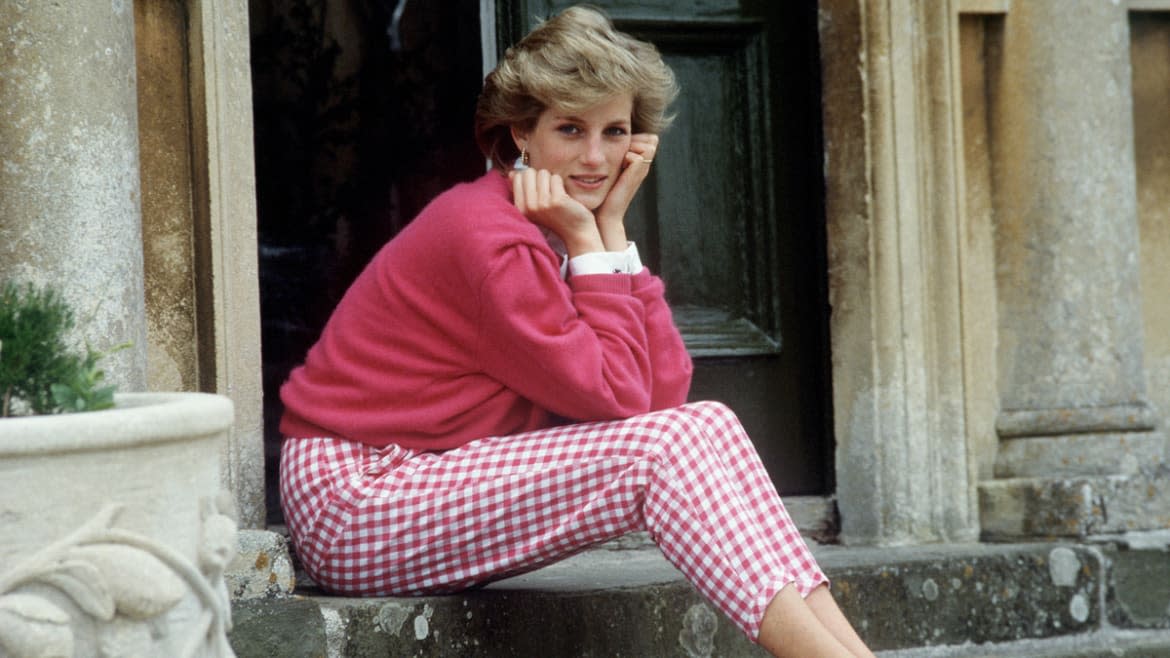
- Oops!Something went wrong.Please try again later.
- Oops!Something went wrong.Please try again later.
Royalist is The Daily Beast’s newsletter for all things royal and Royal Family. Subscribe here to get it in your inbox every Sunday.
HBO’s The Princess has the feel of a familiar dream, a dusty scrapbook, a flickering old movie. Royals fans—and maybe even more than a few House of Windsor agnostics and detractors—may know many of these images all too well.
Unlike typical royal documentaries, The Princess offers no third-person commentary or gaggle of talking heads. There is no narrative holding of hands to shepherd the viewer through the 36, far-too-short years of Princess Diana’s life. Instead, it has an unobtrusive score, and besides that features film footage and images of Diana. Instead of a sound bath, this is an image bath—and it is one of the most affecting documentaries about Diana ever made.
‘The Princess,’ a Horrifying New Princess Diana Documentary, Kicks Off Virtual Sundance
This comment-free structure is a canny decision on the part of its makers, led by director Ed Perkins. It connects to the public who generally were acquainted with and consumed Diana in their media as a series of images, making the viewer both remember her and interrogate their own role in constructing who she was and what she meant to them. The first scene of the documentary features, tellingly, someone outside the Ritz in Paris, besides themselves with excitement at her rumored presence.
Through Diana, the documentary traces the ascendancy and proliferation of images and public image in celebrity culture. It is also an exercise in nostalgia—of what we remember and knew and know, and how closely both were governed by the tabloids of the time. A pre-internet star, Diana was a person, an icon, and a strikingly beautiful avatar of a new era of global celebrity—beloved of photographers and newspaper editors, stalked by the paparazzi, and also, at moments at least, able to assert control of her image and take control of a public and private destiny that she felt was being wrested from her.
The documentary is also moving, most obviously because we know the sad and terrible way this askew fairytale ends, and because it has—as Diana fills the screen—a piercing sense of her near and yet so far; someone so present and alive, and then as we know, tragically not.
It is mostly—progressing from that scene on the night of her death—chronological. We begin with the first moving-image shots of Diana, as a young nursery teacher besieged by cameras because of rumors of her romance with Charles, as she attempts to go to and from work. It is sadly, the perfect first bookend to her public life—it began as it went on, and it finally ended in the same way too. Before her engagement to Prince Charles, there was no security for her, and so we see her on the street, asked personal questions by journalists, the public—including an excited youngster—caught up in the whirl.
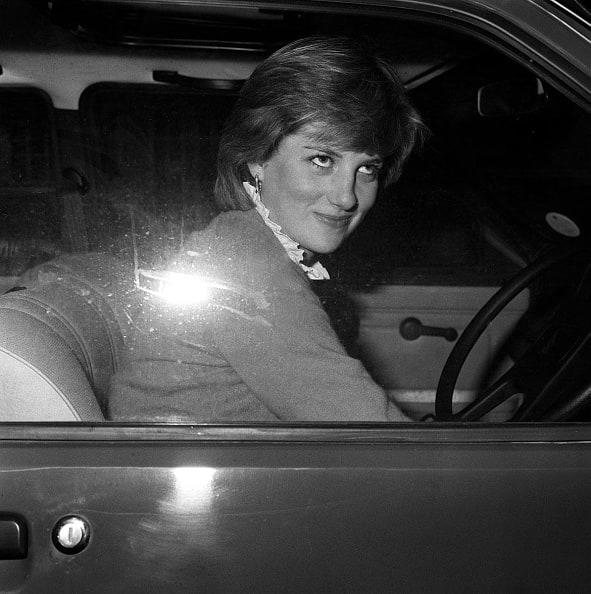
Lady Diana Spencer smiles wryly at photographers after she stalled her new car—a Mini Metro—outside her Earl’s Court flat when leaving for her job as a teacher at a kindergarten in Pimlico, London.
Perhaps we also see two important sides of Diana in these early moments. A mischievous smile shows her early awareness of the absurdity of the situation she is in. “Careful,” she says as a camera or sound person, walking backward in the media scrum, almost injures themselves. And we also see, in her car, her understandable fear and panic—here she is, surrounded and unprotected. Your mind flicks forward to the last night of her life—another car, more paps, the pursuit relentless.
Soon, pre-engagement announcement, the palace exerts control, and Diana disappears inside the wrought iron gates. We see the cringing engagement announcement, with camera footage seeming to show just how either unhappy or uncomfortable Charles and Diana feel. Again, one recalls the clanging toll of Charles’ words: “Whatever ‘in love’ means.”
The documentary, focused as it is on Diana, here also takes the first of its temperature-checks of public feeling. This was still a time of general frenzy when it came to royal occasions—it was only four years since the queen’s Silver Jubilee with its fluttering flags, whooping crowds, and street parties. The documentary strives for even-handedness in the voices it features. We hear, first here and later throughout, from members of the public very much giving a damn about the union, very much not giving a damn, and everything in between—and that excellent feminist badge of the time, “Don’t Do It Di.” But on the big day went, billowing cream Emmanuel dress and all.
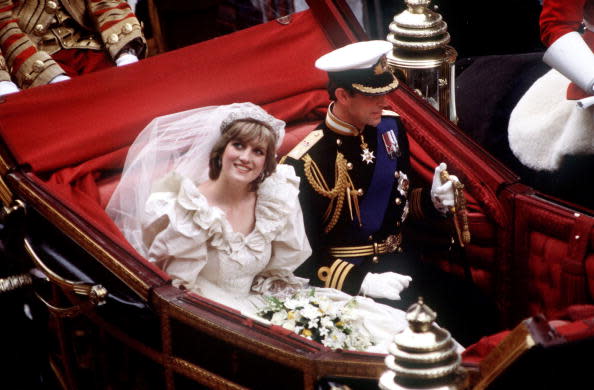
The Prince and Princess of Wales return to Buckingham Palace by carriage after their wedding, on July 29, 1981. Diana wears a wedding dress by David and Elizabeth Emmanuel and the Spencer family tiara.
That day, July 29, 1981, the then-Archbishop of Canterbury said the union of Charles and Diana was “the stuff of which fairytales are made,” and again the toll of the phrasing rings down the years as the implosion of the marriage begins to become apparent. First, we see Diana attract more attention than Charles on their Australian tour of 1983—screams for her, silence for him. Very quickly, Charles realized he was being outshone.
The royal family had a new kind of celebrity on its hands, which instead of nurturing and supporting, it seems to have done the absolute opposite. Soon, there are images of the couple standing apart frostily, the specter of Camilla Parker Bowles, and the lenses of the press capturing the fissures—Diana sitting alone at the Taj Mahal, Diana averting her cheek to avoid Charles’ kiss after a polo match; he eventually left looking, ironically, like a braying horse in the resulting, damning snap.
Again, the public holds forth: she’s looking for publicity, says one voice; leave her alone, says another; what marriage doesn’t have problems, says another, the media should leave them be. But “the War of the Waleses” proved to be an ongoing, big-selling tabloid storyline. The public was treated to heaped-high daily servings whether they liked it or not.
Then, after so long not hearing her voice, it was mediated by Andrew Morton in the book Diana: Her True Story, which took her and Charles, and the rest of the royals more generally, into even more feverishly-headlined territory.
Soon, Charles was confessing his own adultery in print and on national television; Diana the same night wore the now-legendary black, Christina Stambolian-designed cocktail dress, and blew him off the front pages. Diana’s sense of fun, and of knowingly courting flashbulbs, is a delight to see. To see her control the game, albeit briefly, must have been liberating. She knew how she looked, she knew the power of a photograph of her; she knew the power of her own image this documentary gazes upon. She went for it. Bam!
Secret tapes revealed yet more of Diana and Charles’ private lives; she spoke to Martin Bashir for the now-notorious Panorama interview where she spoke of how “crowded” her marriage was with the presence of Camilla Parker Bowles.
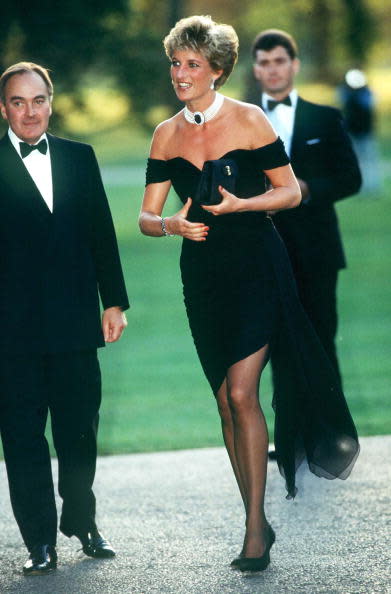
Diana in her Christina Stambolian dress.
At a charity event, we see the next phase of Diana’s life unfold: a partial withdrawal from public life, because of the relentlessness of tabloid intrusion—seeing the speed of cars and general chaos involved in the pursuit of her, one wonders how a terrible accident didn’t happen sooner. Divorce. Her love for her boys. Her ability to occasionally use cameras on her own behalf, as with a trip to a fun park with them. She knew what her currency was, and that gave her power to control her image—fleetingly on occasion, not always.
The last months of Diana’s life show someone who seems to be coming into her own, stripped of her HRH title—she looks and feels different, whether waging her successful campaign around the banning of landmines, or in the paparazzi shots of her holidaying with Dodi Fayed. And then comes that night in Paris; the documentary doesn’t stop with the raising of the mangled wreck of the vehicle, but proceeds to Diana’s funeral, and the raw mass-public reaction to it.
As ever, the even-handed documentary includes voices who deride the outpouring of public emotion, but the intensity and size of it are overwhelming. There is weeping, screaming, silence, the accusation of a lack of feeling on the part of the royals, and a fierce desire to hold the media responsible and accountable.
Once the scrapbook of The Princess closes its pages, it has sketched not just her life, but the linked workings of royal family, public, and media—and the mechanics and intention of royal presentation and pomp. There is Diana, the person, and Diana, the construction of a beautiful icon. There is the reality of a life, and the drama of a life publicly lived and written about. There is the public looking on, and the institution of royalty, lost in time itself and not willing to change even as Diana’s presence and influence change everything around them.
You may, as you watch the documentary, remember—if you were alive—living your own life alongside this dizzying rollercoaster, and moments from it. Or you may, if you’re too young, sit in wonder at the extremity of it.
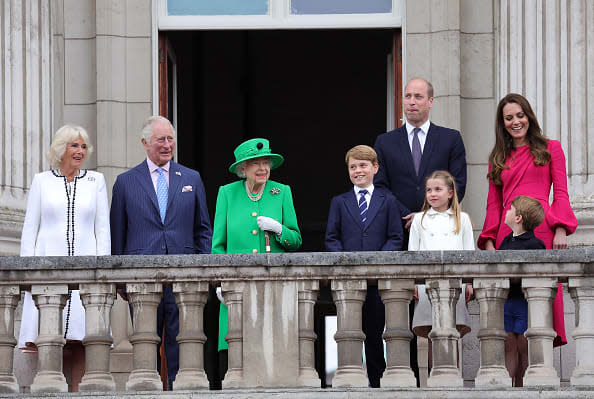
Camilla, Duchess of Cornwall, Prince Charles, Prince of Wales, Queen Elizabeth II, Prince George of Cambridge, Prince William, Duke of Cambridge, Princess Charlotte of Cambridge, Catherine, Duchess of Cambridge and Prince Louis of Cambridge on the balcony of Buckingham Palace during the Platinum Jubilee Pageant on June 5, 2022, in London, England.
The documentary also reveals what Diana revolutionized in terms of royalty, celebrity, and image. The impact she had on the monarchy was not just felt in the week of her death, leading up to her funeral, but still reverberates now. The family, at least as a media entity, sells itself just as cleverly as she did; its images carefully curated on Instagram and social media, or for maximum impact as when Queen Elizabeth made a clutch of dramatic, “I’m-still-here” appearances at the Platinum Jubilee.
Diana’s sons speak directly to the public with her winning candor. When we think of the funeral, one image burned into our minds is seeing them walk behind her coffin, that piece of card reading “Mummy” nestling in the flowers. How Harry and William see the media flows from what they saw when she was alive, and in how she was killed, and their grief and anger afterward. The Princess shows that the spirit of Diana remains a powerful, institution-challenging presence.
The Princess isn’t a documentary packed with exclusive news, and what it illustrates about the public is more revelatory than what it says about Diana and the royals. It shows how a real person becomes an icon, and how that involves them, the public, the media, and a strange chemistry of unknown formulations involving the subject themselves, beauty, charisma, audience, and headlines. The truth about Diana’s power, intriguing as it still is, is in every one of the images we see in The Princess—in how she presented herself, in how she was filmed and photographed, and in how we chose to see what was right in front of us.
Get the Daily Beast's biggest scoops and scandals delivered right to your inbox. Sign up now.
Stay informed and gain unlimited access to the Daily Beast's unmatched reporting. Subscribe now.

